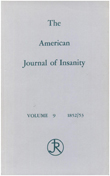Bipolar spectrum disorders in patients diagnosed with velo-cardio- facial syndrome: does a hemizygous deletion of chromosome 22q11 result in bipolar affective disorder?
Abstract
OBJECTIVE: The purpose of this study was to conduct a systematic assessment of psychiatric illness in patients diagnosed with velo- cardio-facial syndrome, a genetic syndrome that involves over 40 somatic anomalies, learning disabilities, and behavioral disorders and is associated with a microdeletion on chromosome 22q11. METHOD: Subjects were referred for psychiatric diagnostic evaluation without regard to age or previous psychiatric history. In order to establish DSM-III-R consensus clinical diagnoses for patients who ranged in age from 5 to 34 years, the Diagnostic Interview for Children and Adolescents--Revised or the Structured Clinical Interview for DSM-III-R (SCID) was used. A review of available medical and psychiatric records and a clinical interview performed by two research psychiatrists to validate specific symptoms and syndromes reported in the Diagnostic Interview for Children and Adolescents--Revised and the SCID were used to elucidate the chronological appearance and duration of symptoms. RESULTS: Sixty-four percent (N = 16 of 25) of this unselected series of patients with velo-cardio-facial syndrome met DSM-III-R criteria for a spectrum of bipolar disorders with full syndromal onset in late childhood or early adolescence (mean age at onset = 12 years, SD = 3). In addition, 20% (N = 5) met DSM-III-R criteria for attention deficit hyperactivity disorder (ADHD), while 16% (N = 4) met criteria for attention deficit disorder without hyperactivity. In contrast to previous reports of a high prevalence of schizophrenia, none of the patients was diagnosed with schizophrenia, and only four had psychotic symptoms during a phase of their illness, all in their 20s or 30s. CONCLUSIONS: Given that the prevalence of bipolar disorder in the general population is estimated to be 1.5% and that the average age at onset is 24, these findings support an unusually strong association between velo-cardio-facial syndrome and early-onset bipolar disorder and suggest that a gene deleted at the 22q11 chromosomal locus may be involved in its pathogenesis. If confirmed, these findings may provide a new and fruitful line of investigation into the molecular basis of bipolar spectrum disorders.
Access content
To read the fulltext, please use one of the options below to sign in or purchase access.- Personal login
- Institutional Login
- Sign in via OpenAthens
- Register for access
-
Please login/register if you wish to pair your device and check access availability.
Not a subscriber?
PsychiatryOnline subscription options offer access to the DSM-5 library, books, journals, CME, and patient resources. This all-in-one virtual library provides psychiatrists and mental health professionals with key resources for diagnosis, treatment, research, and professional development.
Need more help? PsychiatryOnline Customer Service may be reached by emailing [email protected] or by calling 800-368-5777 (in the U.S.) or 703-907-7322 (outside the U.S.).



